2022 Georgia Scientific Computing Symposium
Sponsored by COC CSE!
The Georgia Scientific Computing Symposium is a forum for professors, postdocs, graduate students and other researchers in Georgia to meet in an informal setting, to exchange ideas, and to highlight local scientific computing research. The symposium has been held every year since 2009 and is open to the entire research community. The format of the day-long symposium is a set of invited presentations, lightening talks, and plenty of time to network with other attendees.
Below you will find a detailed schedule of the symposium and lightening talks.
Event Images!
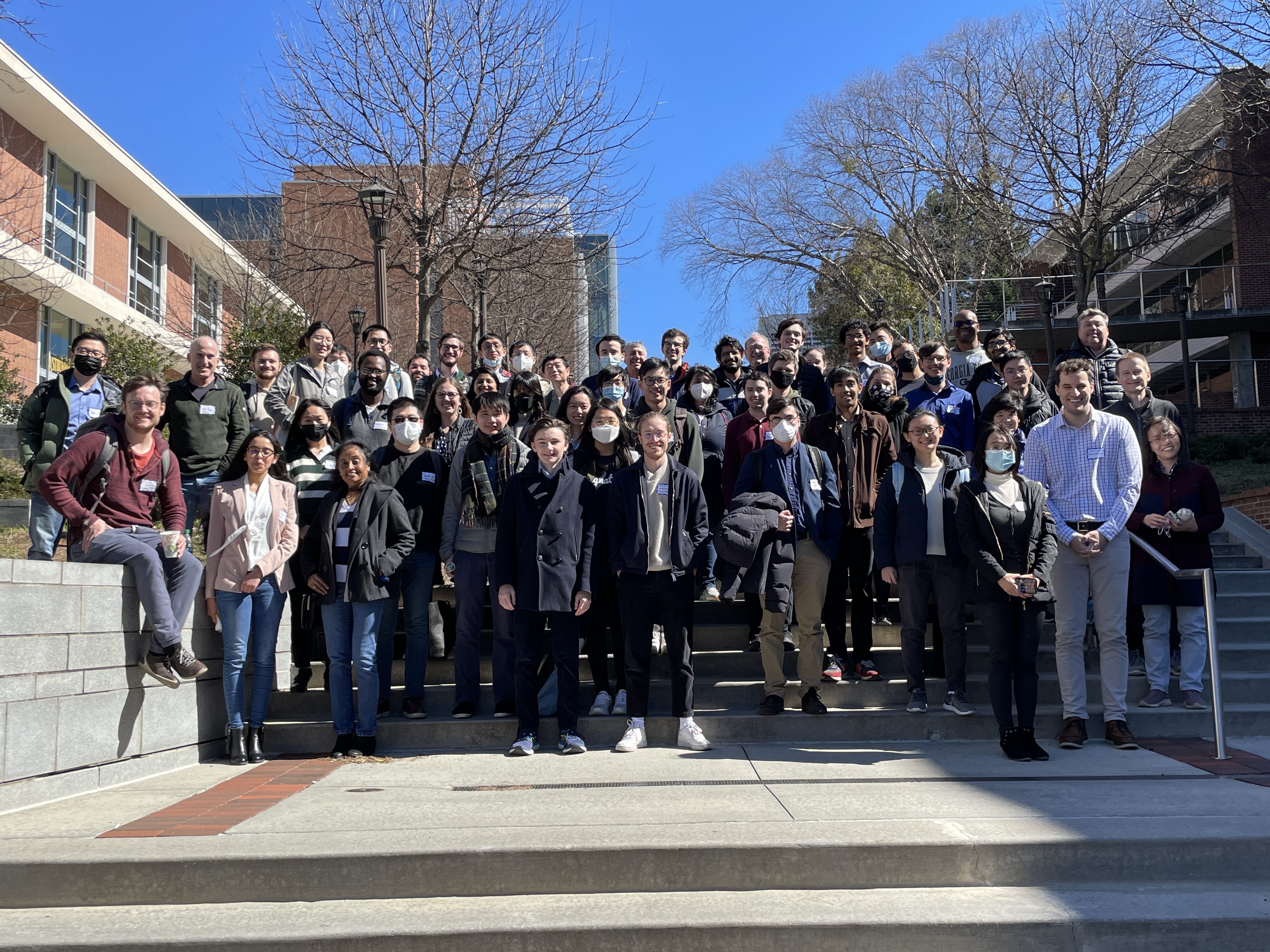
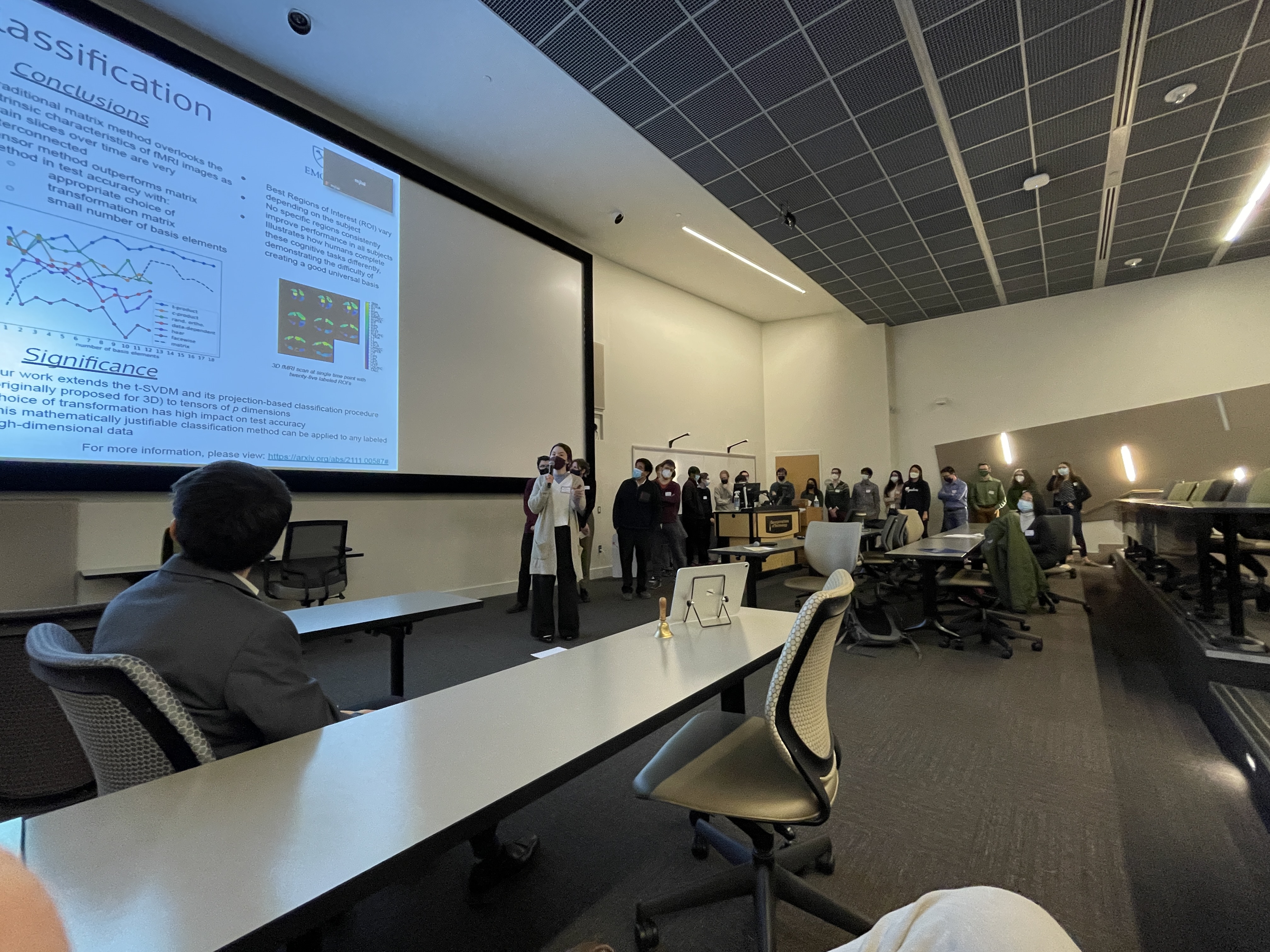
Location, dates, registration
- Location: Clough Undergraduate Learning Commons (CULC), Auditorium 144. Breaks and meals are in Room 102.
- Event date: Saturday, February 19, 2022
- Parking: We suggest the parking deck in the Klaus Advanced Computing Building (E40). Parking all day is $5 to the attendant at entry (baseball game parking). If you have an annual GT parking permit, your Buzzcard will open the gate as usual without cost. After parking, the west parking elevators and stairwells can be used (the central elevators are Buzzcard access only). A map showing the parking deck entrance and walking path to GSCS is below.

Organizers
Contact one of the organizers for more information as needed:
Invited Speakers
 |
Spencer Bryngelson Georgia Tech |
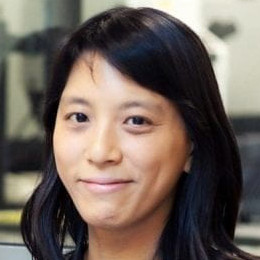 |
Hannah Choi Georgia Tech |
|
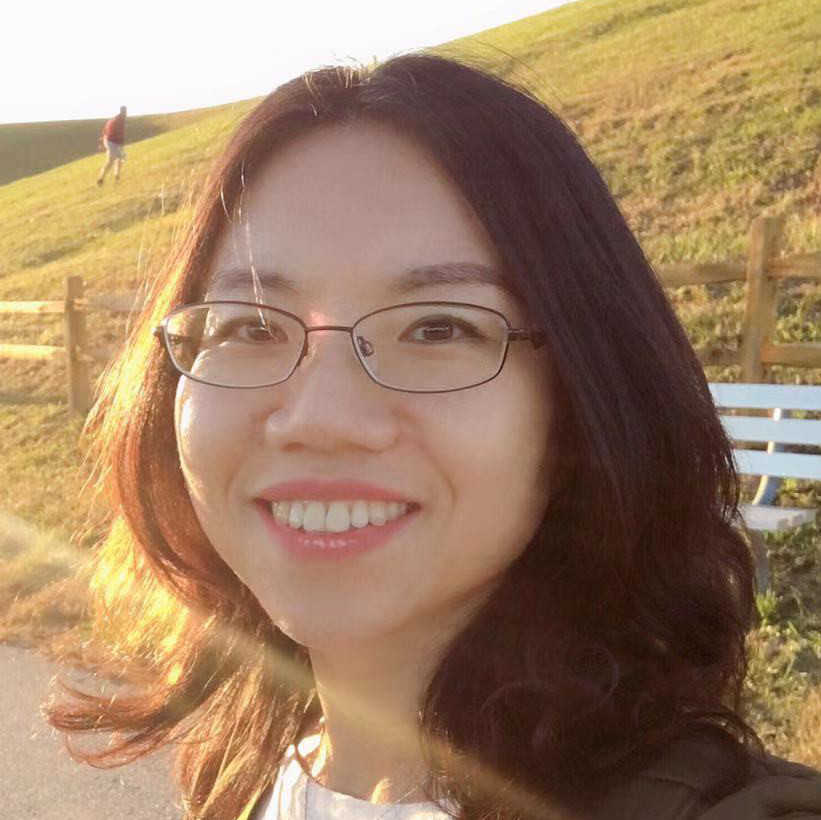 |
Weiwei Hu University of Georgia |
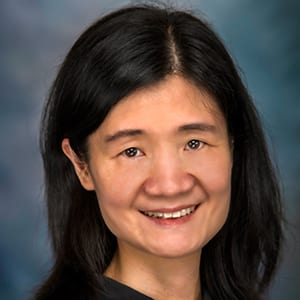 |
Yi Jiang Georgia State University |
|
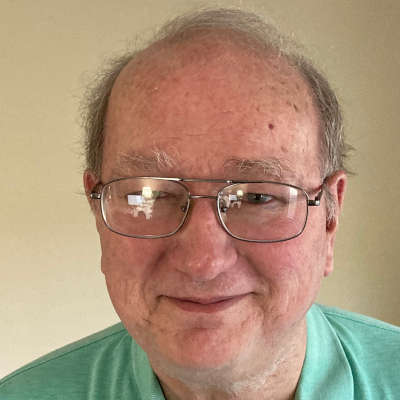 |
Barry Peyton Dalton State College |
 |
Andrey Shilnikov Georgia State University |
|
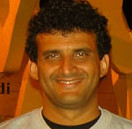 |
Alessandro Veneziani Emory University |
|||
Program
| Time | Activity | ||
|---|---|---|---|
| 9:00 | Continental breakfast (CULC102) | ||
| 9:25 | Opening remarks | ||
| 9:30 | IP: Yi Jiang | ||
| 10:05 | IP: Hannah Choi | ||
| 10:40 | Break (CULC102) | ||
| 11:00 | Lightning talks I | ||
| 12:00 | Lunch (CULC102) | ||
| 1:15 | IP: Weiwi Hu | ||
| 1:50 | IP: Spencer Bryngelson | ||
| 2:25 | IP: Alessandro Veneziani | ||
| 3:00 | Break (CULC102) | ||
| 3:30 | IP: Barry Peyton | ||
| 4:05 | IP: Andrey Shilnikov | ||
| 4:40 | Short Break | ||
| 4:50 | Lightening talks II | ||
| 5:30 | Adjourn | ||
| 6:00 | Optional No-Host Dinner |
Lightening Talk Schedule

Invited Speaker Talks and Abstracts
- Spencer Bryngelson
- Title: Fast multiphase flow closures and the specter of data-driven surrogate models
- Abstract: Multiphase flows require special attention to prevent run-away computational costs. These costs stem from the broad range of dynamically relevant spatial and temporal scales that the flow entails. For example, small bubbles rapidly oscillate compared to the acoustic waves that set them in motion. Sub-grid scale models can average over these effects, allowing for coarser grids and larger time steps. Analytic closure models are only available in special cases, and computing them can be costly. This talk presents the state of these models from both perspectives. I address how we close analytic models numerically without bottle-necking simulations and hope to create valid models without strict assumptions.
- Hannah Choi
- Title: Linking structure and computation of data-driven brain networks
- Abstract: The complex connectivity structure unique to the brain network is believed to underlie its robust and efficient coding capability. One of many unique features of the mammalian cortico-thalamic network is its hierarchical organization. I will discuss functional implications of the hierarchical structure of mammalian cortical network in the framework of predictive coding. Specifically, I will focus on a hierarchical predictive coding model of visual cortex to understand how robust encoding of noisy visual stimuli emerges, and further discuss distinct computations carried out by layer-specific feedforward and feedback connections in the cortical hierarchy. In the second part of the talk, I will discuss how various visual stimuli shape the complexity of functional networks of neural activity by analyzing their network properties.
- Weiwei Hu
- Title: Optimal Control Design for Fluid Mixing: from Open-Loop to Closed-Loop
- Abstract: The question of what velocity field effectively enhance or prevent transport and mixing, or steer a scalar field to the desired distribution, is of great interest and fundamental importance to the fluid mechanics community. In this work, we mainly discuss the problem of optimal mixing of an inhomogeneous distribution of a scalar field via active control of the flow velocity, governed by the Stokes or the Navier-Stokes equations. Specifically, we consider that the velocity field is steered by a control input which acts tangentially on the boundary of the domain through the Navier slip boundary conditions. This is motivated by mixing within a cavity or vessel by rotating or moving walls. Our main objective is to design a Navier slip boundary control for achieving optimal mixing. This essentially leads to a nonlinear control and optimization problem. A rigorous proof of the existence of an optimal open-loop control and the first order necessary conditions for optimality will be addressed. Moreover, a feedback law (sub-optimal) will be also constructed based on interpolation of the optimality conditions. Finally, numerical experiments will be presented to demonstrate our ideas and control designs.
- Yi Jiang
- Title: Mask, Vaccine, and Misinformation in Covid-19 Pandemic
- Abstract: The COVID-19 pandemic, caused by SARS-CoV-2, presents an unprecedented challenge to human health, the economy, and nearly all aspects of our society. Like many of our colleagues, we jumped into Covid-19 modeling, hoping to improve our understanding of the disease spread and mitigation strategies. In 2020 before vaccines were available, masks and social distancing were the main tools we had to impede the spread of virus. Using a stratified SEIAR model, we performed the virtual experiments of putting masks on the passengers onboard of the cruise ship Diamond Princess. The results show quantitatively how timing of masking policy, types of masks used, and public compliance could affect the epidemic outcome, thus suggesting optimal masking policy strategies for high risk environments. Since late 2020, as we recognize vaccination is the only sustainable mitigation to prevent widespread morbidity and mortality from the infection, vaccine hesitancy, resulting mostly from misinformation, threatens the possibility of ending the COVID-19 pandemic through mass vaccination. To address vaccine hesitancy in driving epidemic spread, we use an evolutionary game theoretical framework to characterize the individual decision in vaccine adoption, and an SIS model for the co-evolution of epidemic spread and information spread. Our preliminary results show rich dynamical behavior of this co-evolution, suggesting misinformation fuels epidemic spread such that without the management of misinformation, the epidemic will never end even with high vaccine efficacy. Education increases vaccination and reduces infection, suggesting an ‘educate to vaccinate’ approach to eventually bring the pandemic to endemic. While all models are wrong, we hope our models are somewhat useful in combating Covid-19 and possible future epidemics.
- Berry Peyton
- Title: Fast implementation of the minimum local fill ordering heuristic
- Abstract: Many applications require the solution of large sparse symmetric positive definite linear systems. We consider a problem that arises in connection with solving such systems using sparse Cholesky factorization. It is well known that the space and work required for sparse Cholesky factorization depends on the order in which the variables are eliminated. Several heuristics for producing orderings that lower these requirements have been introduced through the years. The minimum local fill ordering heuristic was introduced in 1967, but it has been virtually ignored due to extremely large runtimes. In this presentation, we do three things: First, we introduce the ordering problem and three ordering heuristics. Second, we resurrect old and introduce new techniques that dramatically reduce runtimes for the minimum local fill ordering heuristic to the point that it becomes a practical option. Third, we compare the performance of the three ordering heuristics on a set of test matrices.
- Andrey Shilnikov
- Title: Measuring chaos in the Lorenz and Rossler models: Fidelity tests for reservoir computing
- Abstract: This study focuses on the qualitative and quantitative characterization of chaotic systems with the use of a symbolic description. We consider two famous systems, Lorenz and Rossler models with their iconic attractors, and demonstrate that with adequately chosen symbolic partition, three measures of complexity, such as the Shannon source entropy, the Lempel–Ziv complexity, and the Markov transition matrix, work remarkably well for characterizing the degree of chaoticity and precise detecting stability windows in the parameter space. The second message of this study is to showcase the utility of symbolic dynamics with the introduction of a fidelity test for reservoir computing for simulating the properties of the chaos in both models’ replicas. The results of these measures are validated by the comparison approach based on one- dimensional return and complexity measures. We employ the methods of qualitative theory and symbolic dynamics to measure chaos and detect stability islands in one- parametric sweeps in the Lorenz and Rossler models, as well as to compare chaotic properties in their reservoir computed surrogates. We seek to test that reservoir computing algorithms are able to pass all tests prepared for them: quantitative ones relying on all three measures extracted from binary sequences such as block entropy, Lempel–Ziv complexity, and Markov matrix structures, as well as qualitative ones based on return maps. We hope that our algorithms and findings will be helpful for a broad interdisciplinary audience including specialists and beginners in dynamical systems and machine learning.
- Alessandro Veneziani
- Title: Cardiovascular mathematics: Data, (Reduced) Models and Clinics
- Abstract: Working in Cardiovascular Mathematics is a rewarding experience, as one has the opportunity to bridge theory and practice with the ultimate purpose of improving healthcare. The reliability and efficiency required by the clinical timelines naturally triggered the development of data assimilation, uncertainty quantification, and reduced-order modeling techniques. The integration of Data-driven and Model-driven approaches is crucial in this field, where each patient may represent a different and unique challenging problem. In this talk, I will address some examples, ranging from aortic diseases to bioresorbable stents. I will point out the critical role of scientific computing and computational mechanics in the “Big-Data” era.
Previous GSCS Locations and Webpages
- 2021, University of Georgia
- 2020, Emory University
- 2019, Georgia Institute of Technology
- 2018, Georgia State University
- 2017, University of Georgia
- 2016, Emory University
- 2015, Georgia Institute of Technology
- 2014, Kennesaw State University
- 2013, Georgia State University
- 2012, University of Georgia
- 2011, Emory University
- 2010, Georgia Institute of Technology
- 2009, Emory University